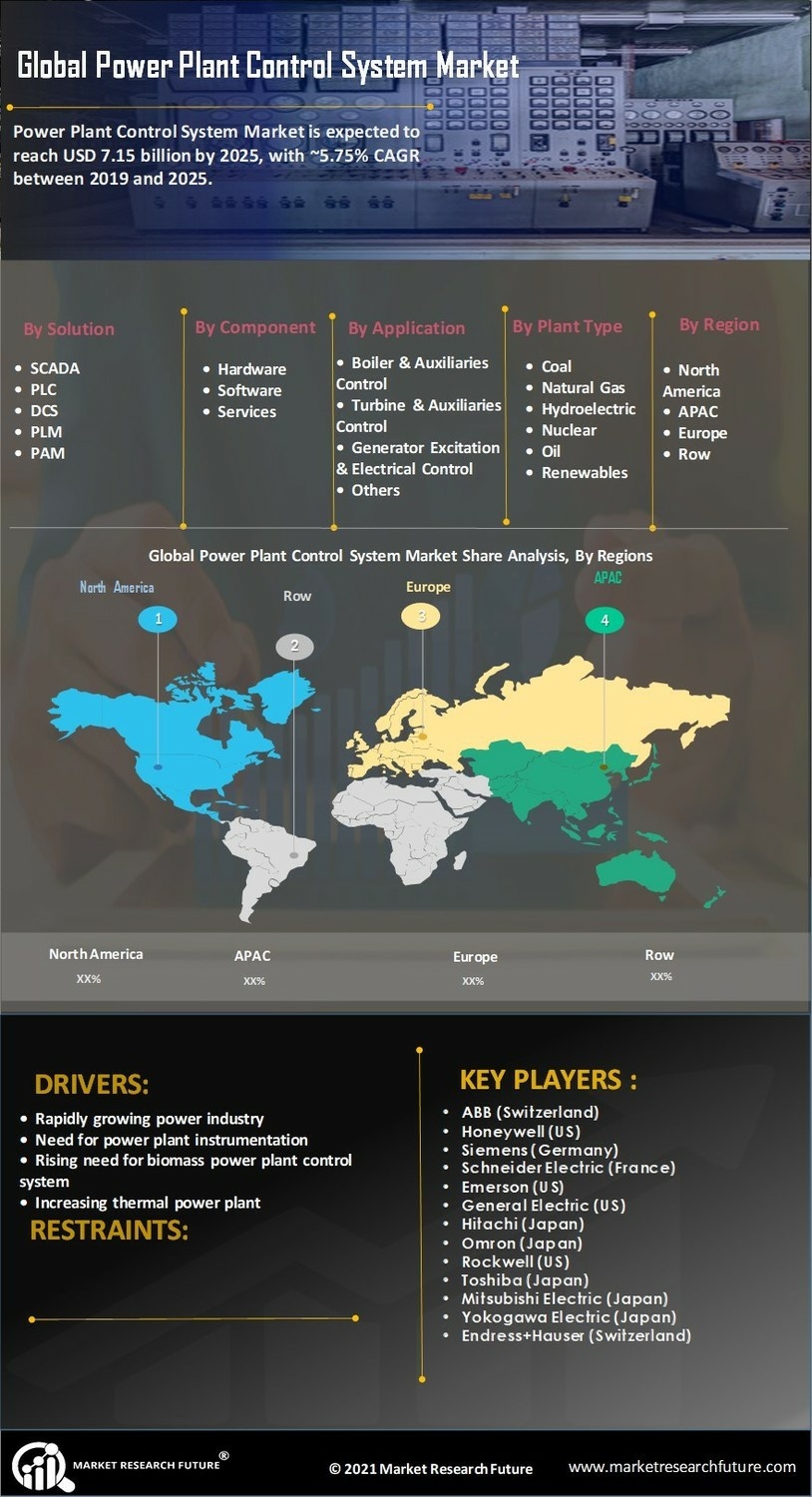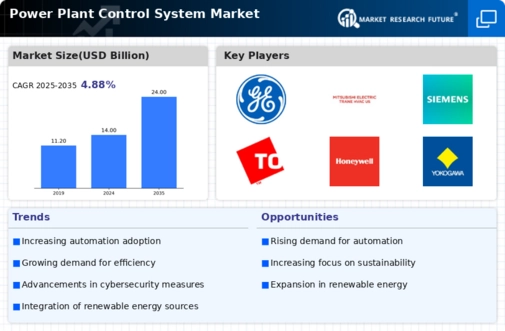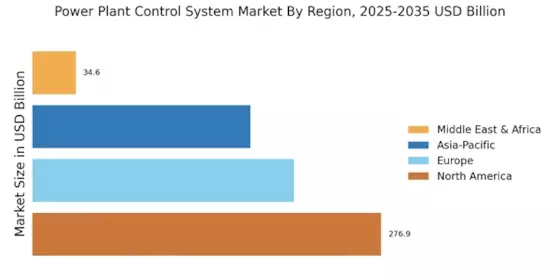Rising Demand for Energy Efficiency
The Power Plant Control System Market is experiencing a notable surge in demand for energy efficiency solutions. As energy costs continue to rise, power plants are increasingly seeking advanced control systems that optimize operations and reduce waste. This trend is underscored by the fact that energy efficiency measures can lead to significant cost savings, with estimates suggesting that implementing such systems can reduce operational costs by up to 20%. Furthermore, regulatory frameworks are increasingly favoring energy-efficient technologies, compelling power plants to adopt modern control systems that align with sustainability goals. The integration of sophisticated algorithms and real-time data analytics within these control systems enhances decision-making processes, thereby improving overall plant performance. Consequently, the drive towards energy efficiency is a pivotal factor propelling the growth of the Power Plant Control System Market.
Integration of Renewable Energy Sources
The integration of renewable energy sources is a transformative trend impacting the Power Plant Control System Market. As the share of renewables in the energy mix increases, power plants are required to adapt their control systems to manage the variability and intermittency associated with these energy sources. This adaptation necessitates advanced control technologies that can optimize the integration of renewables while maintaining grid stability. Reports indicate that by 2025, renewable energy could account for over 30% of total electricity generation, necessitating robust control systems. Consequently, power plants are investing in control systems that facilitate the seamless integration of solar, wind, and other renewable sources. This shift not only enhances the sustainability of energy production but also drives innovation within the Power Plant Control System Market.
Technological Advancements in Control Systems
Technological advancements are playing a crucial role in shaping the Power Plant Control System Market. Innovations such as artificial intelligence, machine learning, and the Internet of Things (IoT) are being integrated into control systems, enhancing their capabilities. These technologies enable predictive maintenance, which can reduce downtime and improve reliability. For instance, the implementation of AI-driven analytics can lead to a 15% increase in operational efficiency. Moreover, the shift towards digitalization in power plants is fostering the development of more sophisticated control systems that can manage complex operations seamlessly. As power plants strive to remain competitive, the adoption of cutting-edge technologies is becoming essential. This trend not only improves operational efficiency but also supports the transition towards more sustainable energy practices, thereby driving the growth of the Power Plant Control System Market.
Growing Focus on Cybersecurity in Power Plants
As power plants increasingly rely on digital technologies, the focus on cybersecurity within the Power Plant Control System Market has intensified. The rise in cyber threats poses significant risks to the operational integrity of power plants, prompting the need for robust cybersecurity measures. Power plants are now prioritizing the implementation of advanced security protocols to protect their control systems from potential cyberattacks. This trend is underscored by the fact that a successful cyberattack could lead to substantial financial losses and operational disruptions. Consequently, investments in cybersecurity solutions are becoming a critical component of control system strategies. The emphasis on safeguarding digital infrastructure not only enhances the resilience of power plants but also fosters trust among stakeholders, thereby driving the growth of the Power Plant Control System Market.
Regulatory Compliance and Environmental Standards
The Power Plant Control System Market is significantly influenced by stringent regulatory compliance and environmental standards. Governments worldwide are imposing regulations aimed at reducing emissions and promoting cleaner energy production. This regulatory landscape compels power plants to invest in advanced control systems that can monitor and manage emissions effectively. For example, compliance with the International Organization for Standardization (ISO) standards requires the implementation of sophisticated monitoring systems. As a result, the demand for control systems that can ensure compliance with these regulations is on the rise. Furthermore, the increasing focus on sustainability and environmental protection is driving power plants to adopt technologies that not only meet regulatory requirements but also enhance their operational efficiency. This trend is likely to continue, further propelling the growth of the Power Plant Control System Market.


















Leave a Comment